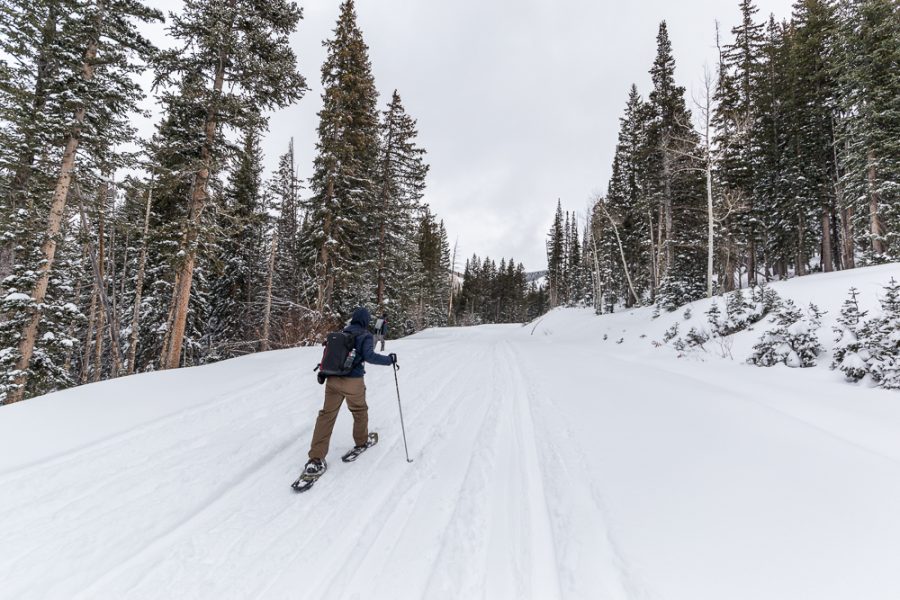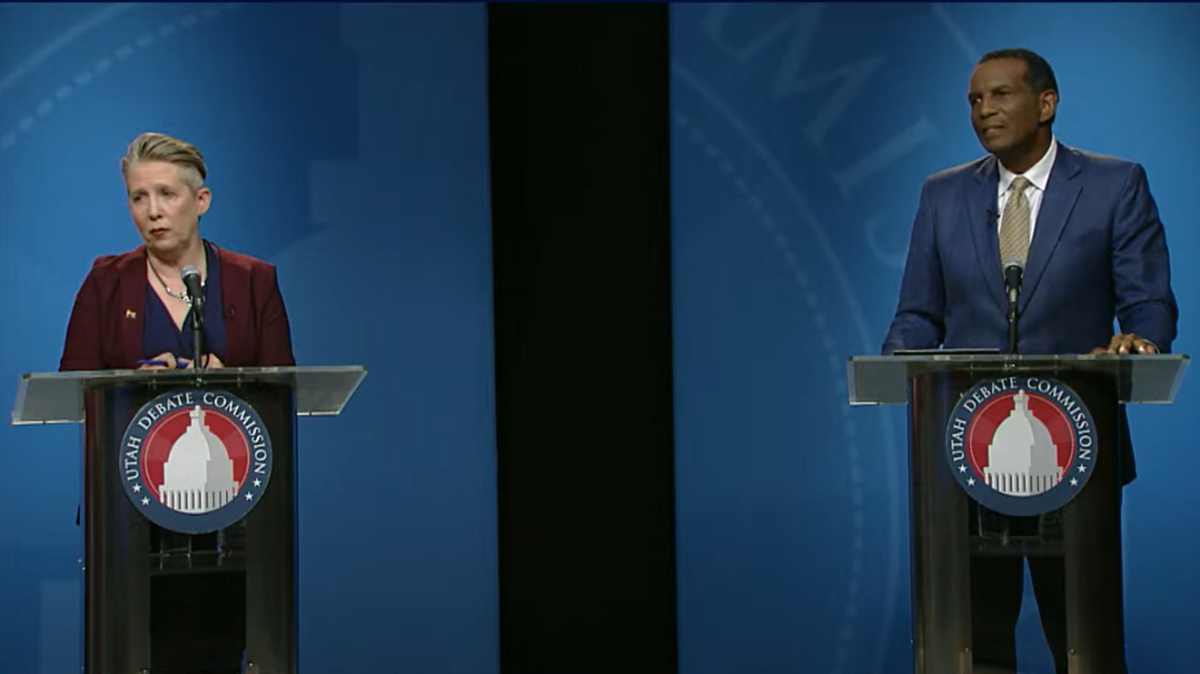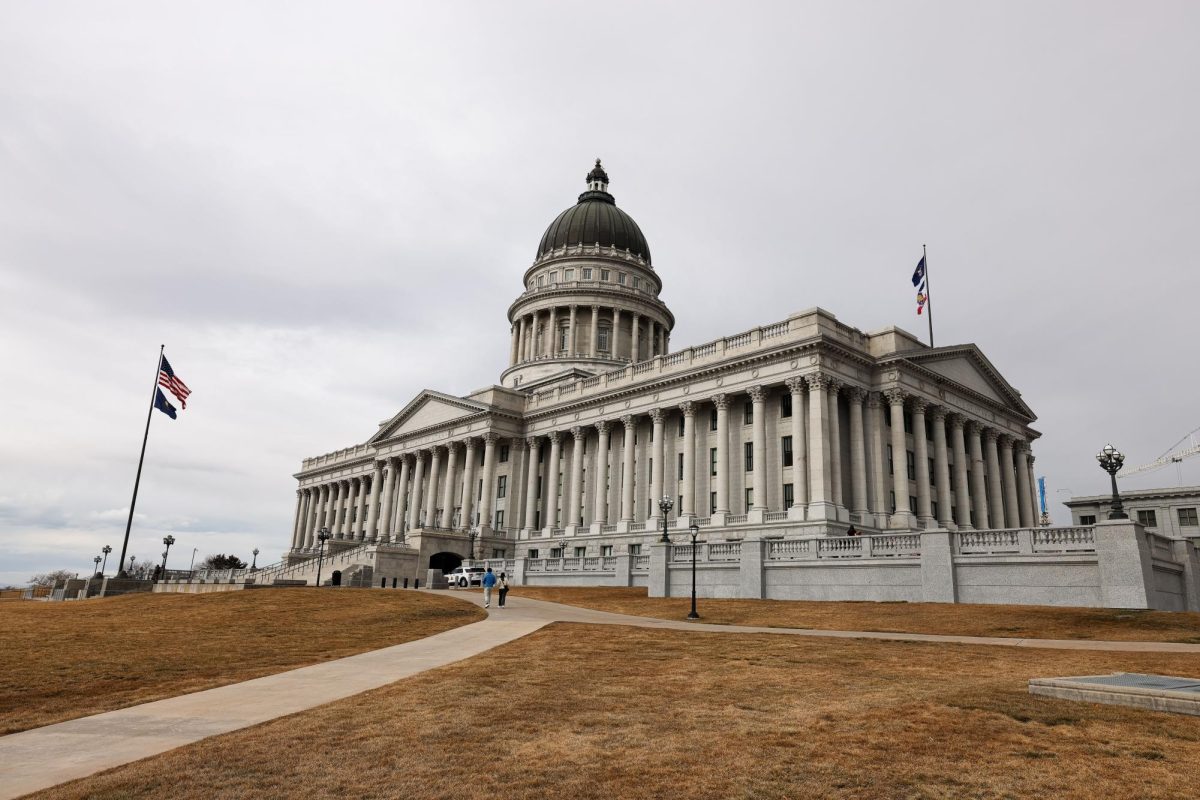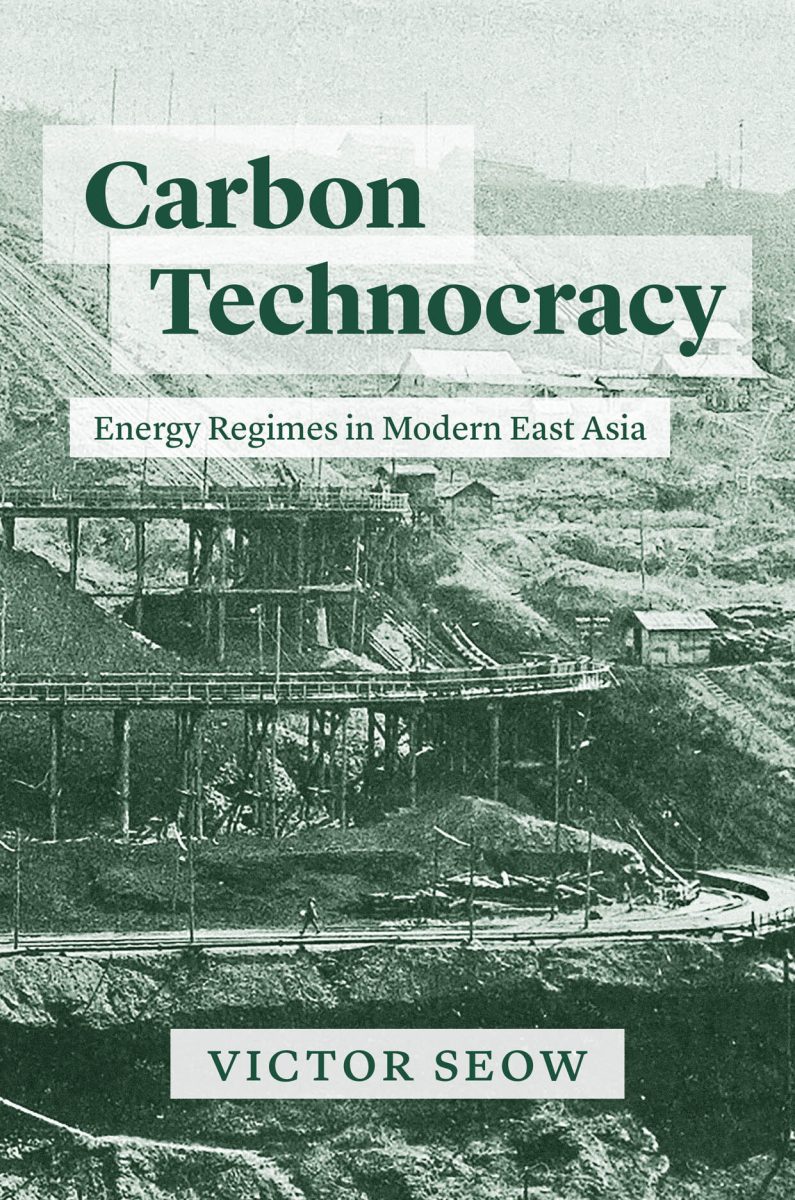Climate Change, Melting Snow and the Future of Utah Winters
How rising temperatures are threatening outdoor recreation, and more, globally
Big Cottonwood Canyon offers a tremendous route for snowmobiles and winter hiking. Photographed on Dec. 29, 2017 (Photo by Abu Asib | The Daily Utah Chronicle)
January 8, 2022
Around the globe, those who live in cold climates rely on snow for transportation, recreation and more. However, as the snowpack shrinks due to global warming, the future of snow sports looks grim.
The Changing Climate
In their 2020 Annual Climate Report, the National Oceanic and Atmospheric Administration stated that the global annual temperature has increased at an average rate of 0.14 degrees Fahrenheit per decade since 1880.
Despite natural fluctuations in climate, scientists have deduced that the rapid increase seen in the past century can largely be attributed to humans. The use of fossil fuels, large-scale industrial manufacturing and animal agriculture are all contributors.
The atmosphere is made up of greenhouse gases such as water vapor, carbon dioxide and methane, which occur naturally. However, humans have amplified their production and the atmosphere cannot remove them quickly enough, which causes more heat than normal to be trapped. This thick layer around the Earth then heats our planet.
According to the National Oceanic and Atmospheric Association, “If yearly emissions continue to increase rapidly, as they have since 2000, models project that by the end of this century, global temperature will be at least 5 degrees Fahrenheit warmer than the 1901-1960 average, and possibly as much as 10.2 degrees warmer.”
Hotter temperatures mean less snow, as the precipitation falling from the sky is unable to freeze and instead turns into rain. More rain affects the water supply towns receive and further eliminates the already existing snowpack by melting it.
“In the lower elevations of Utah, for example, say in the Salt Lake Valley, places like Mountain Dell, where people go cross country skiing, and maybe like near the base of Park City, we’re starting to see, for example, a greater fraction of precipitation in the wintertime falling as rain instead of snow, so we’re starting to see now the early indicators of climate change having an impact on our snow climate,” said Jim Steenburgh, a professor in the department of atmospheric sciences at the University of Utah.
The melting snowpack is also exacerbated by the dust blowing in from the drying Great Salt Lake, according to Steenburgh.
In addition, the 2018 United States National Climate Assessment demonstrates that winters in the Northeastern United States are growing hotter at a rate three times faster than their summers.
The U.S. Environmental Protection Agency collected and analyzed data from a total of 419 weather stations in the country from 1930 to 2007. In their findings, they describe how 57% of surveyed stations demonstrated a decrease in snowfall, with an average decrease of 0.19% per year.
Precipitation, or the Lack Thereof
Irregular snowfall and climate extremes can also be attributed to climate change. Measured increases in extreme precipitation have been documented, and “the air’s capacity for water vapor goes up by about 7 percent” for each degree of warming.
Megan Rielly, a member of the Freeride skiing team at the University of Utah, said that when Utah has had dry seasons in the past, competitions have been canceled because the snow is too firm and icy to ski on.
“The shift of fluctuating snowstorms affects our snowpack levels and the stability of the snow,” Rielly said in an email interview. “Even when we get those good storms, they have sometimes taken longer for the resort to open up more terrain due to the instability from the snowstorms before. Last year in the Wasatch we saw a very unstable snowpack for most of the year, which affected both the resorts and the backcountry.”
The Climate Impact Lab, a collaboration of scientists, economists, researchers, students and more from the nation’s leading research institutions, created a map to depict the number of below-freezing days in the United States.
From 1986-2005, on average, the U.S. had 101 days each year below freezing. Their prediction shows this number will decrease to 58 below-freezing days per year from 2080-2099.
In August 2021, the Intergovernmental Panel on Climate Change released their sixth report with information and research spanning eight years, detailing the emergency state of Earth.
As quoted by the Guardian, António Guterres, the United Nations secretary general, warned “[This report] is a code red for humanity. The alarm bells are deafening, and the evidence is irrefutable: greenhouse gas emissions from fossil fuel burning and deforestation are choking our planet and putting billions of people at immediate risk.”
As more snow melts, cities also have to account for the increased water levels this produces. In California, the typical season snowpack provides a third of the state’s water supply. However, if earlier snowmelt occurs, there is a heightened risk of flash floods in the late spring and early summer, with possible drought occurring as well.
To combat the lack of snow, many resorts have turned to artificial snow blowing. While it seems like a reasonable solution, the expense of creating the pipeline, finding a water source and the energy required to actually blow the snow is yet another opportunity for huge petroleum companies and the like to profit off of ski resorts.
However, for other sports, such as cross-country skiing, snowshoeing and dog sledding, blowing snow is not practical or even feasible. Covering the massive areas these activities require would need an extensive network of machines that would be too expensive to create.
“For Freeride specifically, we need enough snow to cover the terrain that we ski, which can’t be man-made snow,” Rielly said. “We depend on snow storms to cover the steep faces that we ski and compete on. If we have lower levels of snow, then that can affect our safety. The lower the snowpack means more rocks sticking out, bad landings for jumps and difficult snow to ski on.”
Other than environmental impacts, the loss of snow has economic impacts. Mountain towns that rely on outdoor winter recreation as the main source of revenue, such as Jackson Hole, Wyoming and Park City, Utah will be left high and dry.
In an interview with Protect Our Winters for a 2018 survey in collaboration with REI, the Jackson Ski Touring Foundation Executive Director Breanne Torrey said, “Up here in the heart of the White Mountains, our local winter economy is completely dependent and centered around the ski industry.”
The same survey reported that a below-average tourist season can result in the loss of more than one billion dollars and impact more than 17,000 jobs. The livelihoods of these mountain town residents are dependent on having snow to draw the tourists in.
What’s Next?
Climate change has also been a heavily contested issue across all levels of government. The Center for Climate and Energy Solutions makes the following claim: “Given the far-reaching nature of the climate challenge, effective federal policy is needed to achieve deep, long-term reductions in U.S. greenhouse gas emissions, and to help strengthen climate resilience across the U.S. economy.”
Legislation such as the Clean Air Act, originally passed in 1970, work to regulate air emissions to improve the climate.
“Voting is absolutely critical,” Steenburgh said. “Young people need to go out and vote. And if they’re passionate about this particular problem, then vote for people who are going to do something about it.”








